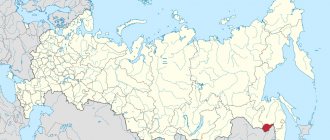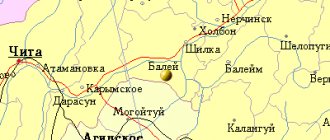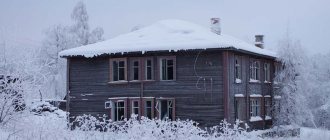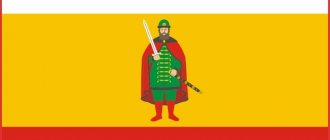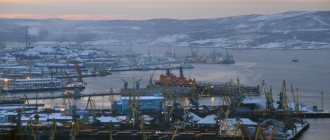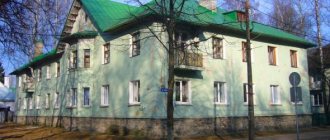What holiday is it today?
February 10, 2022, Thursday
Today are holidays, events: Diplomat's Day Tomorrow: World Sick Day Discovery of insulin
Today is the Orthodox holiday: St. Ephraim the Syrian. Venerable Ephraim of Novotorzhsky. Venerable Ephraim of Pechersk, Bishop of Pereyaslavl. Venerable Theodosius of Totem, Spasosumorin of the monastery, leader and founder... Tomorrow: Transfer of the relics of the holy martyr Ignatius the God-Bearer. Saints Gerasim, Pitirim, Jonah, bishops of Great Perm, Ustva...
Today is a national holiday: Ephraim's Day... Tomorrow: Lawrence's Day
Seasons
Seasons, four periods of the year (spring, summer, autumn and winter) characterized by certain average temperatures. The period during which the Sun passes through one of these sectors is called the season. Spring in the Northern Hemisphere and autumn in the Southern Hemisphere begin when the Sun passes through the initial circle of declination and its right ascension is 0° (vernal equinox). Summer in the Northern Hemisphere and winter in the Southern Hemisphere occur when the sun's right ascension is 90° (summer solstice). Autumn in the Northern Hemisphere and spring in the Southern Hemisphere begin when the sun's right ascension is 180° (autumnal equinox). The beginning of winter in the Northern Hemisphere and summer in the Southern Hemisphere is considered to be the winter solstice, when the direct ascension of the Sun is 270°... Next: Seasons. Russian folk calendar. Monthly words...
see also
- Jewish Autonomous Region
- Symbols and landmarks of the Jewish Autonomous Region
- Cities of Russia
| [ + ] Cities by regions of Russia | |
| Cities of the North-West (NWFD) | St. Petersburg (and its cities) • Leningrad region (historical Staraya Ladoga) • Arkhangelsk region • Vologda region • Kaliningrad region • Karelia • Komi • Murmansk region • Nenets Autonomous Okrug • Pskov region |
| Cities of the Volga region (Volga Federal District) | Bashkortostan • Volgograd region • Kalmykia • Kirov region • Mari El • Mordovia • Nizhny Novgorod region • Orenburg region • Penza region • Perm region • Samara region • Saratov region • Tatarstan • Udmurtia • Ulyanovsk region • Chuvashia |
| Cities of Southern Russia (SFD) | Sevastopol (including Inkerman) • Republic of Crimea • Adygea • Astrakhan region • Krasnodar region • Rostov region |
| Cities of the North Caucasus (NCFD) | Dagestan • Ingushetia • Kabardino-Balkaria • Karachay-Cherkessia • North Ossetia - Alania • Stavropol Territory • Chechen Republic |
| Cities of the Urals (Ural Federal District) | Kurgan region • Sverdlovsk region • Tyumen region • Khanty-Mansi Autonomous Okrug - Yugra • Chelyabinsk region • Yamalo-Nenets Autonomous Okrug |
| Cities of Siberia (Siberian Federal District) | Altai Republic • Altai Territory • Irkutsk Region • Kemerovo Region • Krasnoyarsk Region • Novgorod Region • Novosibirsk Region • Omsk Region • Tomsk Region • Tyva • Khakassia |
| Cities of the Far East (FEFD) | Amur Region • Buryatia • Jewish Autonomous Region • Trans-Baikal Territory • Kamchatka Territory • Magadan Region • Primorsky Territory • Sakha (Yakutia) • Sakhalin Region • Khabarovsk Territory • Chukotka Autonomous Region |
| see also | Cities of the DPR, LPR, Transnistria, South Ossetia • Regions of Russia • Cities of Russia |
Folk calendar about every day
Every day one season always replaces another and this determines a person’s way of life. In connection with this, a folk calendar was formed in which there were practically no nameless, unmarked days. Every day was special, had its own purpose. All this was determined by climate conditions and astrological phenomena.
A calendar is a system for counting periods of time. The first calendars arose a long time ago, in ancient times, because there was a need to measure time. The word calendar comes from the Latin words caleo - to proclaim and calendarium - debt book. This is due to the fact that in Ancient Rome the beginning of each month was especially proclaimed, and because it was customary to pay debts on the first day of the month. Different peoples counted time differently. Some calendars are based on the changing phases of the moon - lunar calendars; in others - the change of seasons - sunny; in others, the length of the year was coordinated with the change of seasons, and the counting of months was associated with the phases of the Moon. Such calendars are called lunisolar.
In Rus', the calendar was called a monthly calendar. Every day, the month book covered the entire year of peasant life, “describing” day by day, month after month, where each day had its own holidays or weekdays, customs and superstitions, traditions and rituals, natural signs and phenomena. The cyclical nature of the calendar is reminiscent of human life, where spring is youth, summer is heyday, autumn is the time of harvesting fruits (it’s good if there are some, otherwise you can live your life without collecting fruits), winter is the time of wisdom and peace. This cyclicality and rhythm determined the way of life of the farmer. The folk calendar was an agricultural calendar, which was reflected in the names of the months, folk signs, rituals and customs. Even the determination of the timing and duration of the seasons is associated with real climatic conditions. Hence the discrepancy between the names of the months in different areas... Next: Folk calendar...
Education. Scientific and cultural institutions
In the region there are (2006): 77 preschool institutions (5.7 thousand students), 207 general education institutions (over 43 thousand students), 9 primary and 5 secondary professional institutions. education, 4 universities (in Birobidzhan), including the Far Eastern State. Social and Humanitarian Academy (founded in 1989 as the Birobidzhan State Pedagogical Institute, current name and status since 2005), branches of the Modern. Humanitarian Institute (Moscow), Khabarovsk State. Academy of Economics and Law, Far Eastern State. Agrarian Institute Among scientific institutions - Institute for comprehensive analysis of regional problems, Far Eastern Branch of the Russian Academy of Sciences (1990), Eur. branch of the Institute of National problems of education of the Ministry of Education and Science of the Russian Federation. The largest library is the Birobidzhan Regional Universal Scientific Library. fuck them. Sholom Aleichem (1941). Volochaevsky Memorial Museum-Monument (1928, Volochaevka village, Smidovichi district), Region. local historian museum (1944; building 1945), Museum of modern times. art (founded in 1989 as a branch of the Far Eastern Art Museum, since 1996 an independent organization), Museum of Jewish Studies (2005).
Fishing calendar for every day
The fishing calendar should not be taken as an absolutely indisputable truth. Fish biting is greatly influenced by a whole range of natural factors, as well as the influence on the nature of man himself. You must not forget that the fish’s bite depends and is determined not only by the calendar dates and biological cycles of their life, reflected in the calendar, but also, no less, by the state of their habitat; the bite also depends on weather conditions: air and water temperatures, cloudiness, wind direction and strength, etc... Next: Fishing calendar...
Farm
E. a. O. included in the Far Eastern Economic. district Industrial volumes and agricultural products are approximately equal in cost. In the structure of GRP (2004, %) the share of transport and communications is 28.9, non-market services 15.9, p. farming 13.3, construction 13.1, trade and commercial. activities for the sale of goods and services 11.1, industry 7.3, other industries 10.4. The ratio of enterprises by type of ownership (by number of organizations, 2005,%): private 58.9, state. and municipal 20.5, society. and religious organizations (associations) 11.0, other forms of ownership 9.6.
Economically active us. 91 thousand people, of which approx. 90% are employed in the economy. Sectoral structure of employment (%, 2004): trade and society. food 14.5, industry 14.4, s. agriculture 12.4, housing and communal services 10.0, education 9.6, transport 8.5, healthcare 7.0, construction 6.3, culture and art 3.2, etc. Unemployment rate approx. 8%. Cash income per capita 8.1 thousand rubles. per month (March, 2007; 74.5% of the average income in the Russian Federation); OK. 30% of us. has income below the subsistence level.
Industry. Industrial volume products 3.4 billion rubles. (2005). In the industrial structure of the industry. production (%, 2004) the leading role belongs to the construction industry. materials (22.4), as well as forestry, woodworking and pulp and paper industries (20.4); the share of mechanical engineering and metalworking is 16.3, electric power industry is 15.8, light industry is 8.2, food industry is 6.1, other industries is 10.8.
Brown coal is mined (Table 1; the Ushumunskoye deposit is developed by the Ushumunsky Coal Mine enterprise; the main consumer is the Birobidzhan Thermal Power Plant as part of Khabarovskenergo), magnesium ores (Kuldur brucite mine).
| Table 1. Main types of industrial products | |||||
| 1985 | 1990 | 1995 | 2000 | 2005 | |
| Electricity, billion kWh | 57,5 | 2,5 | 6,6 | 0,3 | 0,6 |
| Coal, thousand tons | – | – | – | 15 | 116 |
| Power transformers, thousand kVA | – | – | 1493 | 792 | 1435 |
| Commercial timber, thousand dense m3 | 243 | 436,6 | 33,8 | 22,4 | 178 |
| Cement, thousand tons | 1037 | 1073 | 272 | 250 | 309 |
| Hosiery, million pairs | 32,6 | 36,3 | 6,9 | 7 | 5,8 |
Machine-building enterprises produce electrical equipment. equipment (“Birobidzhan Power Transformer Plant”), grain, forage and rice harvesters (Dalselmash combine plant, Birobidzhan), machinery and equipment for livestock farming, etc. Harvesting and processing of wood (“Dalsoyuzprom”), lumber production , furniture (Dalmebel, etc.; all in Birobidzhan). Production of cement (cement plant, Teploozersk-type settlement), lime (lime factories in Birobidzhan and Londoko-type settlement), brick (sand-lime brick plant, Birobidzhan), reinforced concrete. products, etc.
Birobidzhan is one of the centers of light industry in the Far East: industrial and trading knitwear company "Victoria" (hosiery, knitted products), "Diamant" (knitted products), "Vostok - Holding" (footwear products), felted shoe factory "Winter". Leading enterprises in the food industry are located in Birobidzhan: a meat processing plant, a confectionery and pasta factory, Birobidzhan-Moloko, Birobidzhan-ALKO, Taiga-Vostok, etc.
One of the important factors of farms. development of the region is foreign economic. activities (main cooperation with China). The commodity structure of exports is dominated by raw materials (timber, etc.), while imports are dominated by food, machinery, equipment and vehicles. Enterprises created with the participation of China. capital, are engaged in the procurement and processing of wood, construction, agriculture. production, trade, etc. (including the Far Eastern Medical Systems plant in Birobidzhan - blood transfusion systems, blood substitutes, etc.).
Agriculture. Cost of gross output c. x-va 3.1 billion rubles. (2005), including ca. 75% comes from crop products. S.-kh. development of the territory is low - agricultural area. land 178.7 thousand hectares (about 5% of the region’s area, including arable land - more than half). The structure of sown areas is dominated by technical. culture (61.8%). They grow grain crops (22.4% of the sown area; including barley, wheat, oats, mainly in the Amur River valley; Table 2), vegetables and potatoes (12.4%; in the east of the region, in the valley of the Bira River), as well as soybeans.
Livestock farming is extensive, combining grazing and stall keeping of livestock. Basic directions – meat and dairy cattle breeding, pig breeding (Table 3, 4). Beekeeping.
| Table 2. Main types of crop production, thousand tons | |||||
| 1985 | 1990 | 1995 | 2000 | 2005 | |
| Corn | 44,8 | 63,9 | 35,2 | 19,6 | 23,2 |
| Potato | 103,7 | 140,8 | 90,9 | 98,9 | 141,9 |
| Vegetables | 27,2 | 23,7 | 13,9 | 26 | 45,5 |
| Table 3. Livestock, thousand heads | |||||
| 1985 | 1990 | 1995 | 2000 | 2005 | |
| Cattle | 92,5 | 96,6 | 56,7 | 21,8 | 15,3 |
| Pigs | 41,2 | 46,2 | 23 | 15,5 | 11,8 |
| Sheep and goats | 2,4 | 3,5 | 4,8 | 4,7 | 6,2 |
| Table 4. Main types of livestock products | |||||
| 1985 | 1990 | 1995 | 2000 | 2005 | |
| Livestock and poultry for slaughter, thousand tons | 8,5 | 10,6 | 5,3 | 3 | 2,6 |
| Milk, thousand T | 69,4 | 104,6 | 41,4 | 29,4 | 25,8 |
| Eggs, million pieces | 48,7 | 49 | 17,6 | 12,5 | 19,3 |
About 68% of agricultural land refers to agricultural lands. organizations, peasant (farm) holdings occupy 23.1%, for personal use of citizens - 6.3%. Peasant farms produce approx. 61% grain; in households – b. parts of potatoes (88.5%), livestock and poultry for slaughter, milk (approx. 84%), 66.6% vegetables; in agriculture organizations - 34.6% of grain.
Transport. The length of the railways is 513 km (2005). The territory of the region is crossed by the Trans-Siberian Railway. The length of paved roads is 1533 km. On the territory of E. a. O. The federal highway "Amur" passes through (Chita - Khabarovsk). The length of the river routes is 685 km. River navigation on the Amur and Tunguska rivers (river ports in the village of Leninskoye, the village of Amurzet, the village of Pashkovo, etc.). For international freight and passenger transportation on the river. Amur checkpoints operate: “Nizhneleninskoye” (Leninsky district), “Amurzet” (Oktyabrsky district), “Pashkovo” (Oluchensky district), where river and ferry (in winter - automobile) communication operates . Airport in the village Yellow Yar (near Birobidzhan).
Orthodox calendar about every day
Orthodox calendar: Orthodox, Church and Christian holidays.
The church year is an alternation of weekdays and holidays. On weekdays, a person is called to work “by the sweat of his brow to earn his bread.” Holidays are given in order to feel liberation, to rise above the bustle and routine of the world, to feel involved in the highest of worlds, “where there are no illnesses, sorrows and sighs, but endless life.” Since ancient times, holiday cycles have been associated with the seasons. The pagans associated them with the worship of the forces of nature, the cult of which in the Old Testament was replaced by gratitude to the Creator for the universe. And although the connection between holidays and the seasons has not completely lost its power, since God is present in everything, in the plant and animal world, in human works, it nevertheless faded into the background, giving way to a spiritual foundation built on the Sacred Scriptures. The history of Orthodox holidays dates back to the times of the Old Testament. Each of the Orthodox holidays is dedicated to the remembrance of the most important events in the life of Jesus Christ and the Mother of God, as well as the memory of saints... Next: Orthodox calendar...
Cities of the Jewish Autonomous Region
Birobidzhan
- this city with a population of 75 thousand stands on the banks of the Bira River. In Soviet times, thanks to help from the center, it was still possible to live here. Now everything has become much more complicated. There are no prospects here, and those who are quicker and more purposeful are in a hurry to leave for other cities. Among the advantages, it is worth noting the ecology, greenery in the city, low prices. Despite them, there are practically no people willing to move to Birobidzhan, except that those who participate in government programs for migrants go to this city to receive government “lifting allowances.”
Russian folk calendar for every day
The word “sign” comes from the word “notice”, i.e. observe. As a result of observing what happens around a person every day, he accumulates life experience. This knowledge was passed down from generation to generation, carefully preserved and people trusted it as a sacred book. Many signs have come to us from the depths of centuries without losing their knowledge. Each of us is free to choose: to dismiss all this as an absurd superstition or to take a closer look at the signs and take the centuries-old experience of generations more seriously. Most of us, when taking exams, ask them to scold them, boasting about some kind of good fortune or luck, spit so as not to jinx them or knock on wood, take a detour if a black cat crossed the road, are afraid of the number 13 and much more. And who among us does not have lucky things, numbers? Who has never resorted to the help of fate at least once in their life, who has not believed in secrets? It’s as if everything connected with signs is hidden somewhere deep in our subconscious. Often we remember them mechanically, unconsciously, or just as a joke. But, undoubtedly, the signs contain a lot of accurate knowledge and practical wisdom of our ancestors. They cover all the characteristic, often difficult to perceive, natural phenomena. Signs have preserved a lot of what was in old folk holidays and customs; they help predict the weather, grow crops... Next: Folk signs...
Population
B. h. population of E. a. O. are Russian (89.9% – 2002 census). The rest are Ukrainians (4.4%), Jews (1.2%), Tatars, Belarusians, etc.
Characteristic of natural population decline: mortality (17.9 per 1000 inhabitants, 2005) exceeds the birth rate (11.6 per 1000 inhabitants). Infant mortality is one of the highest in the Russian Federation (15.6 per 1000 live births). The share of women is 51.7%. The share of the population under working age (up to 16 years) is 18.7%, over working age 16.2%. Wed. life expectancy is 59.3 years (one of the lowest in the Russian Federation; men - 53.9, women - 65.9). The migration outflow of the population is characteristic (54 people per 10 thousand inhabitants), mainly. outside the Far Eastern region (approx. 60.5% of emigrants). Wed. population density is low – 5.4 people/km2; b. Most of the settlements are concentrated along the Trans-Siberian Railway. Gor. us. 66.3% (2006; 66.2% in 1989).
Holiday calendar, dates and events of the year
All state and professional holidays in Russia, including significant World and International holidays, and other equally interesting holidays and events about every day.
The holiday has always kept pace with the history of mankind. Social time can be divided into three types: everyday life (weekdays), weekends and holidays. Everyday life is a series of practices repeated day after day and every day (work). Weekends are regular breaks from the rush of everyday life. It is believed that on weekends a person should restore his strength after working days. Day off, non-working day. A holiday is a day of celebration established in honor or in memory of someone or something. A day or series of days celebrated by the church in memory of a religious event or saint... Next: Calendar...
Fine arts and architecture
In the 1930s–40s. buildings were erected. in the style of owls neoclassicism: station in Obluchye (1930s); in Birobidzhan - station (1935; reconstruction in the early 2000s), regional universal scientific. fuck them. Sholem Aleichem (1944, architect V. G. Gelfreich), Philharmonic building (1980s; reconstruction 2006). In the end 1990s – 2000s in the capital of E. a. O. new construction is actively underway (the village of Nikolskaya Ts., the Annunciation Cathedral, a synagogue, etc.), programs for the reconstruction of Ch. squares (ensembles with city sculptures). Among modern artists - V. A. Mizgalsky, G. S. Shtanko, D. G. Alekseytsev.
Prayer book, Orthodox prayers for every day
Prayer is the most powerful means for healing all illnesses - both physical and mental. Prayers can be laudatory or grateful, petitionary and repentant. If we have offended God, sinned, we must ask Him for forgiveness, that is, repent. Such prayers are called repentant prayers. If everything is fine with us, if we and our loved ones are healthy and prosperous, if we have a place to live, something to wear, something to eat, we must glorify and thank God for this. Such prayers are called praise or thanksgiving. If some misfortune, illness, trouble or need happens, you need to ask God for help. Such prayers are called petitionary... Next: Orthodox prayers...
Zodiac, astrological, eastern calendar. Zodiac signs
In ancient times, to establish the calendar, priests used knowledge of the positions of all the planets. Before the reform of Peter 1, the New Year was celebrated on the Day of the Autumn Equinox. On this day, according to ancient legend, the most peaceful treaty was concluded between the Great Race (ancient Slavs) and the Great Dragon (ancient Chinese) and it was approximately 7518 years ago... For the ancient Slavs, the calendar month corresponded to the lunar cycle from new moon to new moon, taking into account such Thus, the relationship of the entire annual cycle with astronomical and natural phenomena. There was no coherent calendar system. The main natural phenomena are still considered to this day to be the days of the solar equinox and solstice - the Slavic holidays Maslenitsa, Kupala, Ovsen and Kolyada. But during the time of Peter 1, all ancient Slavic calendars were abolished and a new Western European calendar from the Nativity of Christ (Julian calendar) was introduced, while the beginning of the calendar was moved to January 1. The Julian calendar (old style) did not take leap days into account and accumulated one extra day every 128 years. After the October Revolution in 1918, the Gregorian calendar (new style) was introduced in Russia, according to which an amendment of 13 days was introduced. The calendar of the ancient Slavs was based on two planets: the Sun and the Moon. And now they don’t use anything at all. The calendar has become static. There is no such thing as the calendar, it turns out, resting on some planet. Nobody even knows about it. There are just some standard numbers, there are months and holidays. The calendar is based on the Sun and Moon. Why is this so? Because these two luminaries influence the Earth. The Earth revolves around the Sun, and the Moon revolves around the Earth. And these two luminaries create the atmosphere on the planet. From here the calendar is built... Next: Astrological calendar...
Historical sketch
The most ancient archaeological sites on the territory of E. a. O. belong to the 3rd millennium BC. e. and are represented by the Kondon culture. It is replaced by the Uril culture, correlated with the Ilou tribes, then by the genetically related Polish culture, left by the ancestors of the Nivkhs. In the first centuries of our era, alien tribes of the Mohe culture appeared here, developing into the Jurchen culture. In the 8th–10th centuries. n. e. territory of modern E. a. O. was the north outskirts of the state of Bohai. After its collapse, alliances of tribes were formed (Daurs, Duchers, Khitans, Manchus, Nanais, Evenks). In the 13th–14th centuries. this part of the Amur region was part of Mong. empire, in the 1640s. as a result of the campaigns of V.D. Poyarkov, E.P. Khabarov and others, it was assigned to Rus. state, which led to a clash with China. According to the Nerchinsk Treaty of 1689, the territory from the confluence of the river. No one was allowed to populate the Sungari to the Amur and further to the Okhotsk metro station, Russian. the settlers were forced to leave the developed lands of the Amur region. The re-development of this territory by the Russians began in mid. 19th century and is associated with the activities of the Governor General of the East. Siberia by N.N. Muravyov (later Muravyov-Amursky). In 1856 for the organization and protection of the military. Cossack posts were set up in warehouses - Khingan (at the mouth of the Khingan River) and Ust-Sungari (at the mouth of the Sungari River). Since the spring of 1857, the left bank of the Amur was actively populated by Cossacks of the Transbaikal Cossack Army, from which the Amur Cossack Army was formed in 1858. In 1858–60, the first 18 villages arose - Pashkovskaya, Radde, Mikhailo-Semyonovskaya, Ventselevo, Golovino, Puzino, Voskresenovka, Ekaterino-Nikolskoye, Storozhevaya, etc. Wed. The left bank of the Amur was officially assigned to Russia under the Aigun Treaty of 1858 and the Beijing Treaty of 1860, and became part of the formed Amur Region (1858) and the Primorsky Region (1860).
Significant impact on occupancy and economics. The development of the region was influenced by the construction of the Amur railway. d. (1908–16), the final section of the Trans-Siberian Railway; the stations Bira, Birakan, Obluchye, Tikhonkaya and others were opened on it. A new stage of economics. development of modern territory of E. a. O. associated with the resettlement of peasants from the center. and zap. provinces of Ros. empire (1901–14), for which lands were allocated between the Tunguska, Amur, Bira and Malaya Bira rivers. Peasant volosts were formed - Tungusskaya (1910), Uldurinskaya (1914), and Blagoslovenskaya (where the indigenous population that had lived here for a long time predominated). In 1920 Wed. The Amur region became part of the Far Eastern Republic, 11/15/1922 – 1/4/1928 it was part of the Amur province, then – the Far Eastern Territory of the USSR. In the 1920s The Committee on the Land Organization of Working Jews (KOMZET; formed in 1924 by a resolution of the Presidium of the Central Executive Committee of the USSR) considered the region as a possible place for the resettlement of Jews from the West. and center. regions of the USSR. In 1927, the committee sent one of its expeditions to the area of the Bira and Bidzhan rivers to survey the territory. prof. B. L. Brook. 28.3.1928 The Presidium of the Central Executive Committee of the USSR adopted a resolution “On assigning to KOMZET for the needs of the complete settlement of free lands in the Amur region of the Far Eastern Territory by working Jews.” In May 1928 at the station. Quiet, where the settler was formed. point, the first settlers arrived from the Ukrainian SSR, BSSR, center. regions of the RSFSR and from abroad, the largest number of immigrants arrived in 1932 (14 thousand people, of which 6.2 thousand were Jews, including 293 people from abroad). They received great help from the Americans. organizations "IKOR", "Ambidjan", "Agro-Joint" (provided funds, medicines, supplied equipment for factories, tractors, etc.), as well as societies. committees for the land organization of working Jews in Minsk, Moscow, Leningrad, Kazan, etc. During the same period, there was also a reverse outflow of immigrants.
By resolution of the Central Executive Committee of the USSR dated August 20, 1930, the Birobidzhan National National Park was formed as part of the Far Eastern Territory. district (center - a village near the station Tikhonkaya, later - the city of Birobidzhan). By resolution of the Central Executive Committee of the USSR dated May 7, 1934, it was transformed into E. a. O. The population of the region numbered 52.7 thousand people. (1934), including 7.5 thousand Jews living in 248 settlements (in nine the Jewish population predominated), including in four workers’ settlements (Bira, Birakan, Obluchye, Smidovich). Official Yiddish was the language along with Russian, documentation in the state. institutions was conducted in two languages. Operated: lime factories (Londokovsky and at the Izvestkovy junction), Tungussky, Birsky and Birakansky timber mills, Birsky timber industry enterprise, Birakan turpentine plant, several. brick factories, Sutar gold mines; Birobidzhan agricultural The station carried out work on acclimatization and selection of agricultural products. crops Since 1934, air services have been operating. line Birobidzhan - village. Amurzet, Birobidzhan - Khabarovsk. During Vel. Otech. war enterprises E. a. O. produced products for the front.
In 1948, in connection with the start of the campaign “to combat cosmopolitanism,” in E. a. O. National repressions began. attribute: alm was closed in 1949. "Birobidzhan", Heb. state theater, books in Yiddish were confiscated from the funds of the regional library, b. h. euro intelligentsia left the region. In the 1950s, with the beginning of the “thaw”, attention to the problems of the development of the Jewish people. culture in the region has resumed.
Dream books online, interpretation of dreams
A dream book is nothing more than an interpreter of dreams and dreams, a translator of dreams. Since ancient times, people have been using dream books; dreams have always been given great importance, and people have often noticed the prophetic properties of some dreams. The dream book can become your faithful assistant every day and throughout your life, thanks to the dream interpreter you can always make the right decisions, the dream book will help you resist temptations in time, and will warn you against wrong steps and frivolous actions. Further…
Content
- 1 History 1.1 Before the creation of the EAO 1.1.1 Acquisition of the Amur region by Russia
- 1.1.2 Military colonization
- 1.1.3 Construction of the Trans-Siberian Railway
- 1.1.4 Russian Civil War
- 1.2.1 Soviet policy towards minorities and Jews
- 2.1 Climate
- 3.1 Transport
- 4.1 Knowledge of foreign languages
- 7.1 Notes
